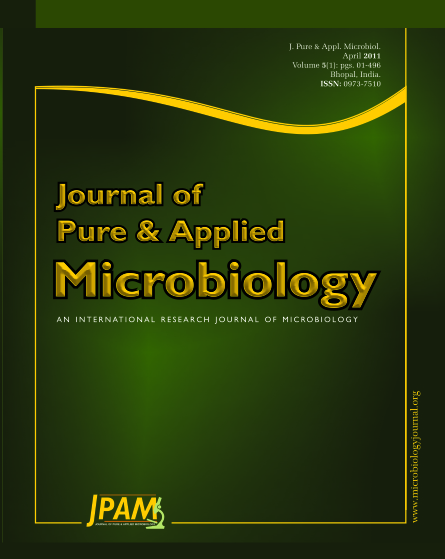Pure culture of Acid Black -1 dye degrading bacteria was isolated from azo dye contaminated soil in the industrial zone of Thirupur, Tamil Nadu, India. The bacterium was identified by 16S rRNA as Pseudomonas aeruginosa. The optimization of process conditions (pH, temperature, and carbon source) for dye degradation during incubation with P.aeruginosa was carried out using Response Surface Methodology (RSM) based on a central composite design (CCD). Maximum degradation was achieved at pH 6.5, temperature 350C with carbon source as 1.5 % after 48 hrs of incubation. This design of experiment methodology increased the dye degradation in many folds. The degraded dye sample was assessed by GC – MS, which indicated that the decolorization took place due to dye degradation.
16S rRNA, Pseudomonas aeruginosa, RSM, Biodegradation, GC – MS analysis
© The Author(s) 2011. Open Access. This article is distributed under the terms of the Creative Commons Attribution 4.0 International License which permits unrestricted use, sharing, distribution, and reproduction in any medium, provided you give appropriate credit to the original author(s) and the source, provide a link to the Creative Commons license, and indicate if changes were made.


